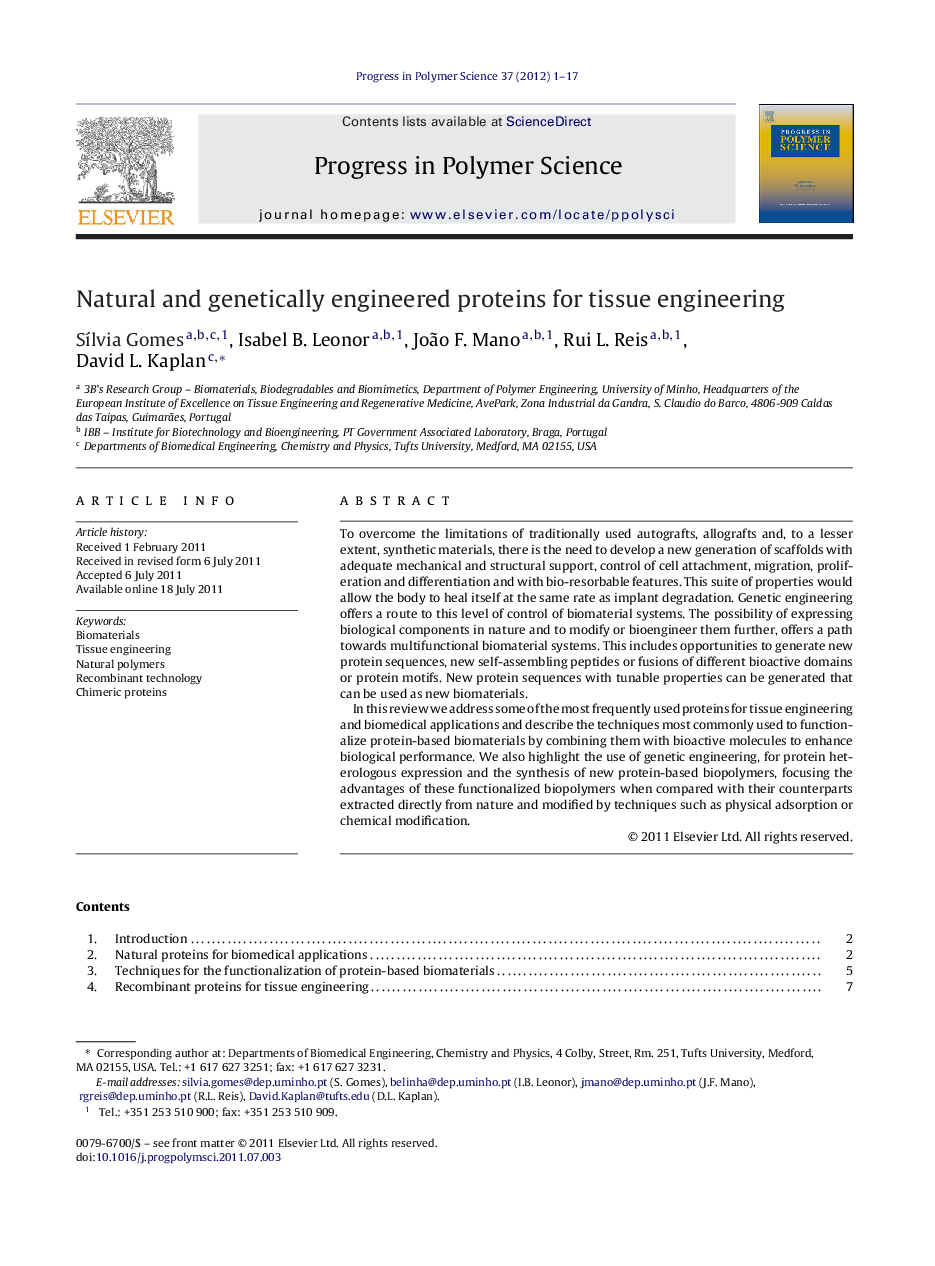| Article ID | Journal | Published Year | Pages | File Type |
|---|---|---|---|---|
| 5208312 | Progress in Polymer Science | 2012 | 17 Pages |
To overcome the limitations of traditionally used autografts, allografts and, to a lesser extent, synthetic materials, there is the need to develop a new generation of scaffolds with adequate mechanical and structural support, control of cell attachment, migration, proliferation and differentiation and with bio-resorbable features. This suite of properties would allow the body to heal itself at the same rate as implant degradation. Genetic engineering offers a route to this level of control of biomaterial systems. The possibility of expressing biological components in nature and to modify or bioengineer them further, offers a path towards multifunctional biomaterial systems. This includes opportunities to generate new protein sequences, new self-assembling peptides or fusions of different bioactive domains or protein motifs. New protein sequences with tunable properties can be generated that can be used as new biomaterials.In this review we address some of the most frequently used proteins for tissue engineering and biomedical applications and describe the techniques most commonly used to functionalize protein-based biomaterials by combining them with bioactive molecules to enhance biological performance. We also highlight the use of genetic engineering, for protein heterologous expression and the synthesis of new protein-based biopolymers, focusing the advantages of these functionalized biopolymers when compared with their counterparts extracted directly from nature and modified by techniques such as physical adsorption or chemical modification.
